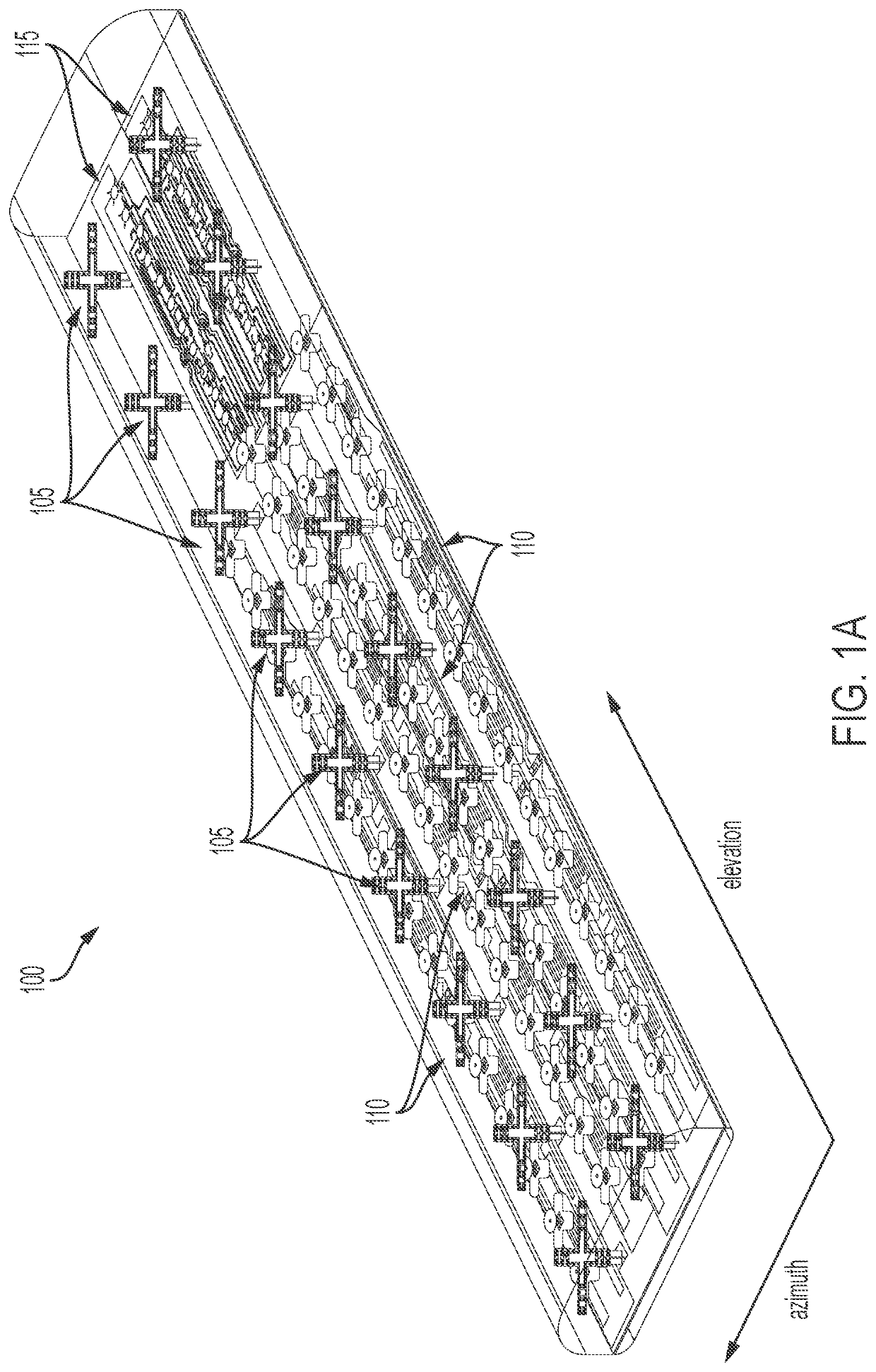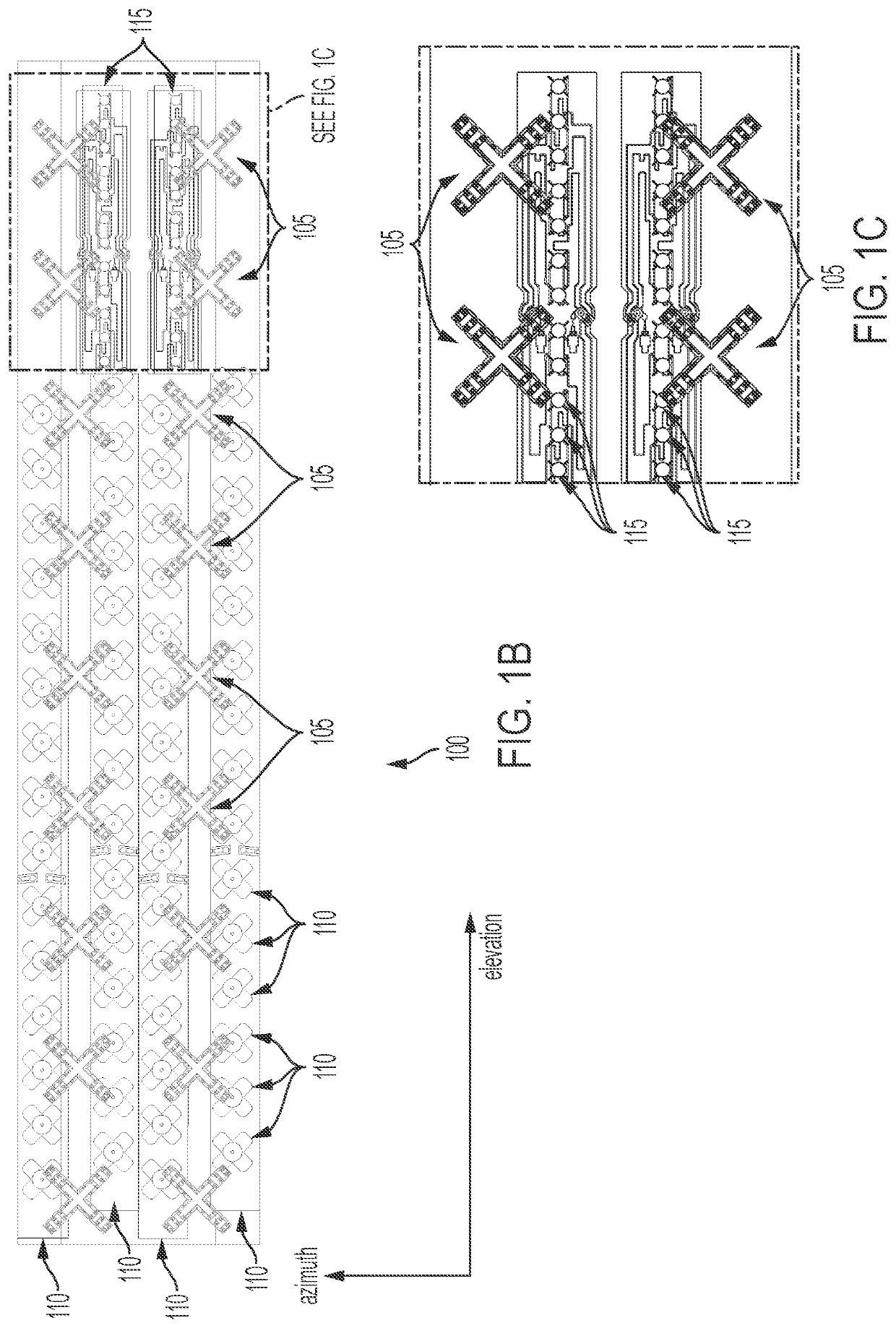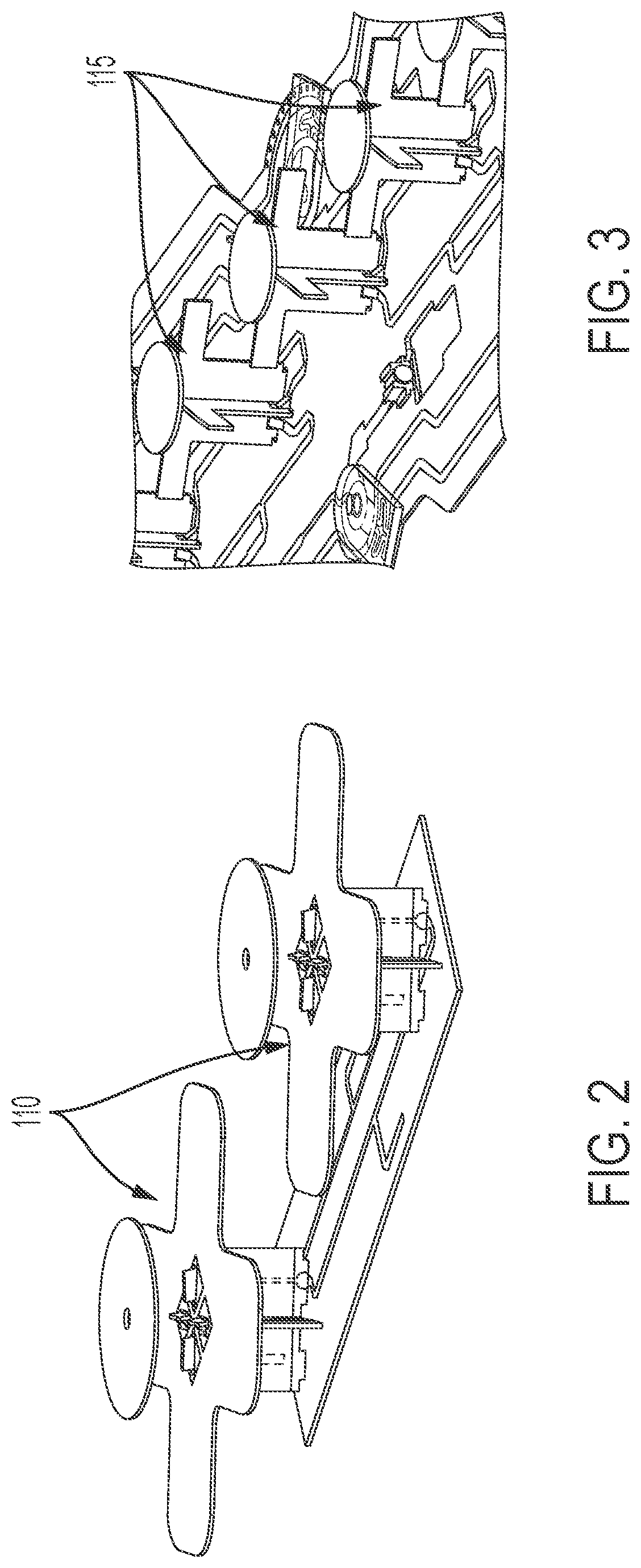Antenna Radiator with Pre-Configured Cloaking to Enable Dense Placement of Radiators of Multiple Bands
a radiator and antenna technology, applied in the field of wireless communication, can solve the problems of affecting the performance of the antenna in the c-band band, affecting the performance of the antenna in the lower band radiator, and affecting the practical
- Summary
- Abstract
- Description
- Claims
- Application Information
AI Technical Summary
Benefits of technology
Problems solved by technology
Method used
Image
Examples
Embodiment Construction
[0023]FIG. 1A illustrates an exemplary array face 100 according to a first embodiment of the disclosure. Array face 100 has a plurality of low band radiators 105 (for example, 617-960 MHz) that are arranged in two columns along the elevation axis of the antenna; a plurality of mid band radiators 110 (for example, 1.695-2.7 GHz) that are arranged in four columns and only extend for a portion of the antenna length along the elevation axis; and a plurality of C-Band radiators 115 (for example, 3.4-4.2 GHz) (as used herein, the C-Band radiators may be referred to as high band radiators) that are arranged in two columns along a remaining length array face 100 along the elevation axis. Each of the low band radiators 105, mid band radiators 110, and C-Band radiators 115 comprise two orthogonal radiator arms, each of which radiate in a single polarization. Accordingly, each of the radiators illustrated may operate independently in two orthogonal polarizations (“dual polarized”), for example...
PUM
 Login to View More
Login to View More Abstract
Description
Claims
Application Information
 Login to View More
Login to View More - R&D
- Intellectual Property
- Life Sciences
- Materials
- Tech Scout
- Unparalleled Data Quality
- Higher Quality Content
- 60% Fewer Hallucinations
Browse by: Latest US Patents, China's latest patents, Technical Efficacy Thesaurus, Application Domain, Technology Topic, Popular Technical Reports.
© 2025 PatSnap. All rights reserved.Legal|Privacy policy|Modern Slavery Act Transparency Statement|Sitemap|About US| Contact US: help@patsnap.com



